Growing vegetables from seed is fun and rewarding. But growing a vegetable garden takes planning and preparation. In this guide, we’ll cover everything you need to know to get started with a vegetable garden layout plan.
It doesn’t matter how great your vegetable garden looks if you don’t get any vegetables from it. In this article, I’ll teach you how to layout a vegetable garden that will yield tons of fresh veggies every year.
This guide will help you plan, prepare, and plant your first vegetable garden. I’ll walk you through the whole process step-by- step and explain why each step matters.
- Related article: Starting a Vegetable Garden for Beginners
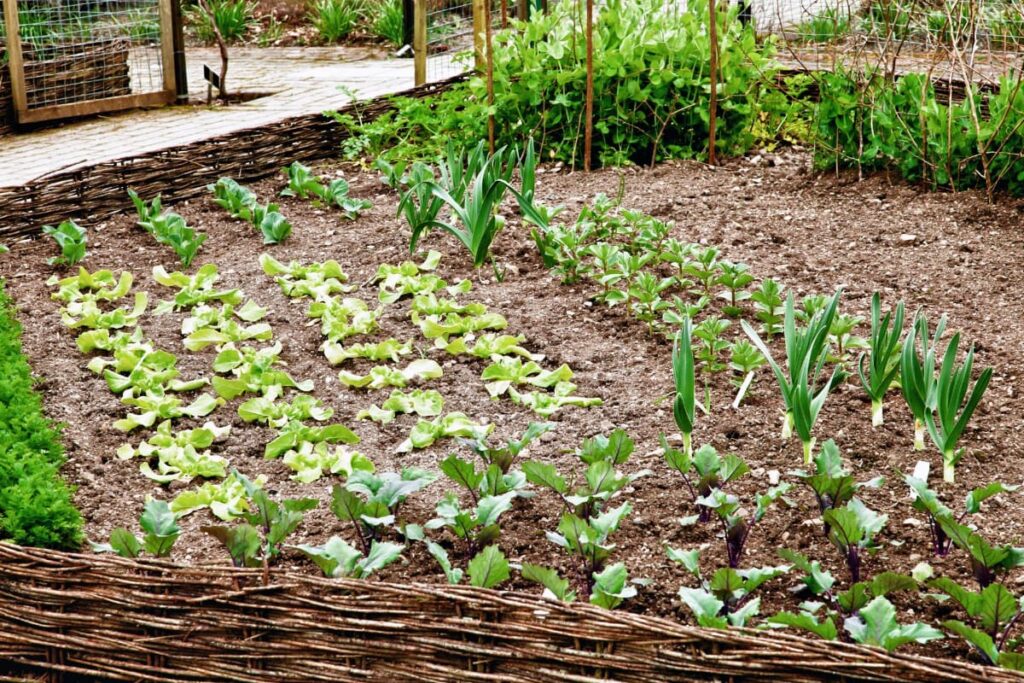
Assess and Select Your Garden Location
You may have grand plans of large vegetable beds brimming with produce, but you need to assess your space before you do anything.
A small space shouldn’t put you off having big ideas, and a large area can be overwhelming, so first, you need to decide what will work where.
Here are a few things to consider when assessing your garden.
- Hours of sunlight. Most vegetables need at least six hours of sunlight per day, so spend time in your garden during the day and note which areas get full sun, partial light or partial shade, or full shade. This observation will help you plan your garden and decide which vegetables to plant and where.
- How windy is your garden? Some vegetables like a bit of a breeze, and others prefer a sheltered spot. Use what you have to optimize your growing space and ensure your vegetables get the right conditions.
- The size of your garden will affect how you plant your garden. Raised beds of vegetable patches are more suited to larger areas, but small yards can still be very productive. If you are short on space, consider using everything at your disposal.
Many plants can be grown against fences. Apple and pear trees can be trained in cordons, and a trellis can support climbing vegetables like legumes or cucumbers.
You aren’t confined to thinking about the square footage of your yard either. There are vertical gardens that save space horizontally. The Lettuce Grow Farmstand garden is a popular line of vertical gardens. - Access to water. This one is a biggy that can be easily overlooked. Your veggies will need a good soak every couple of weeks, and you should make this as easy for yourself as you can.
Is there an outside tap you can use, or is there somewhere you can put a water butt to harvest rain?
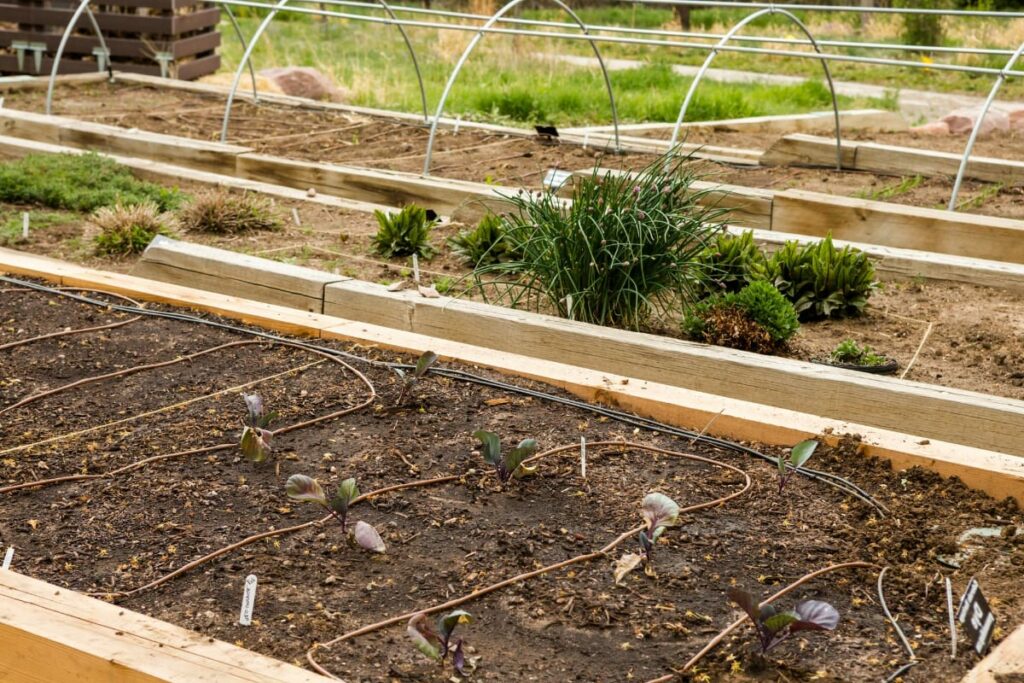
Which Plants Do You Want to Grow?
When planning a vegetable garden, the second thing you need to consider is which plants you want to grow. Once you’ve decided what you want to grow, then you can see how it fits into your space. If properly planned, no obstacle is too big.
Below I’ve listed some issues you might have and simple ways to overcome them.
- Growing sun-loving plants in a shady yard. If you want to grow vegetables that need full sun, but don’t have an area that gets six hours of sunlight a day, consider growing your vegetables in pots.
Planters and bases with wheels are available online, so you can move your vegetables with the sun, ensuring they get the full six hours of sun. - Growing shade-loving plants in a sunny yard. This one is easier to fix, and there are numerous ways of doing it. The first is to grow tall or bushy plants around the shade-loving plants. For example, peas and beans grow quickly and can provide shade for lettuce or shade-loving brassicas.
Legumes have the added benefit of fixing nitrogen into the soil, which also benefits the plants. Bay trees are a good addition for shade, as are fruit trees.
You could also make a shady spot with bedsheets, parasols, or garden sail, like this one online. Alternatively, you could grow them in movable pots or planters and move them into the shade when needed. - Growing vegetables in unsuitable soil. Maybe your soil is too sandy, or perhaps it gets waterlogged. If you have unsuitable soil and don’t have enough time or patience to amend the soil, your best option is raised beds.
Raised beds should be filled with compost and topsoil, and have many benefits. They give improved drainage, the soil warms up quicker in the spring, and they are much easier to weed and keep tidy.
Learn more about What Soil is Best for Vegetable Gardens. - You have a small yard. Even the smallest yard can produce a lot. Even plants like sweetcorn and potatoes, which are traditionally thought of as needing a large area, can successfully be grown in a tiny space.
Think about using the fences or walls surrounding the space and clever companion planting that makes the most of your room. Growing sweetcorn and then planting beans, so they can grow up the sweetcorn stalk is a great example and has been done by Native Americans for centuries.
Not only will companion planting make the most of your space, but inter-planting different vegetables will also often deter pests.
Types of Garden Layouts
If you feel overwhelmed choosing a layout for your garden, here are some classic vegetable garden layout ideas that might inspire you.
1. Row Layout
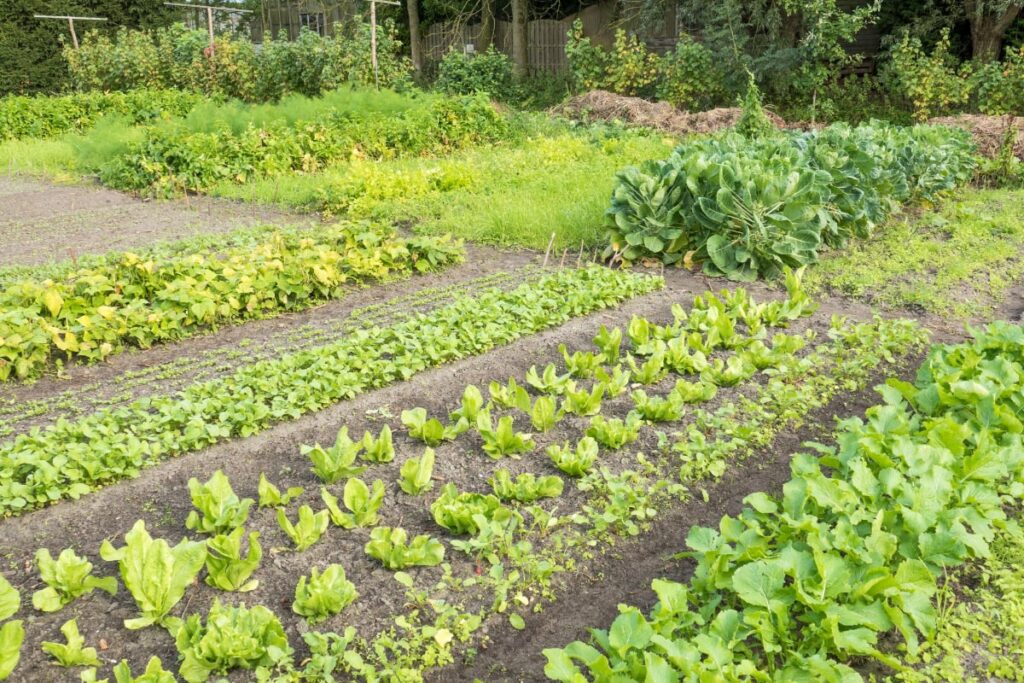
Rows are probably what most people have in mind when it comes to starting a vegetable garden where each crop is then separated by a line of bare earth that allows access for weeding and harvesting.
Traditional row gardening involves planting vegetables in a straight line with crops like peas or beans grown in double lines.This method can look attractive with all the vegetables giving distinctly different heights and textures.
But aesthetics aren’t the only reason for growing in rows; it also has practical advantages.
- Growing in rows allows you to inspect the plants for pests and diseases, and the bare earth in between the rows enables you to reach all the plants without stretching.
- The space between the rows allows for more air circulation and is great for watering directly at the plant’s base.
- Irrigation systems are usually best suited to rows, as the pipes can be easily laid between the rows. This layout also means that the rows of plants can easily be covered if needed.
Disadvantages of this method include wasted space, as the distance between the rows could be used more effectively.
For this reason, row vegetable gardens are usually best when you have a large area. The spaces between the rows can also mean more work as the space between rows can allow the soil to dry out quickly and weeds to grow.
Walking the paths can also lead to compacted soil that degrades the soil structure over time.
2. Square Foot Layout
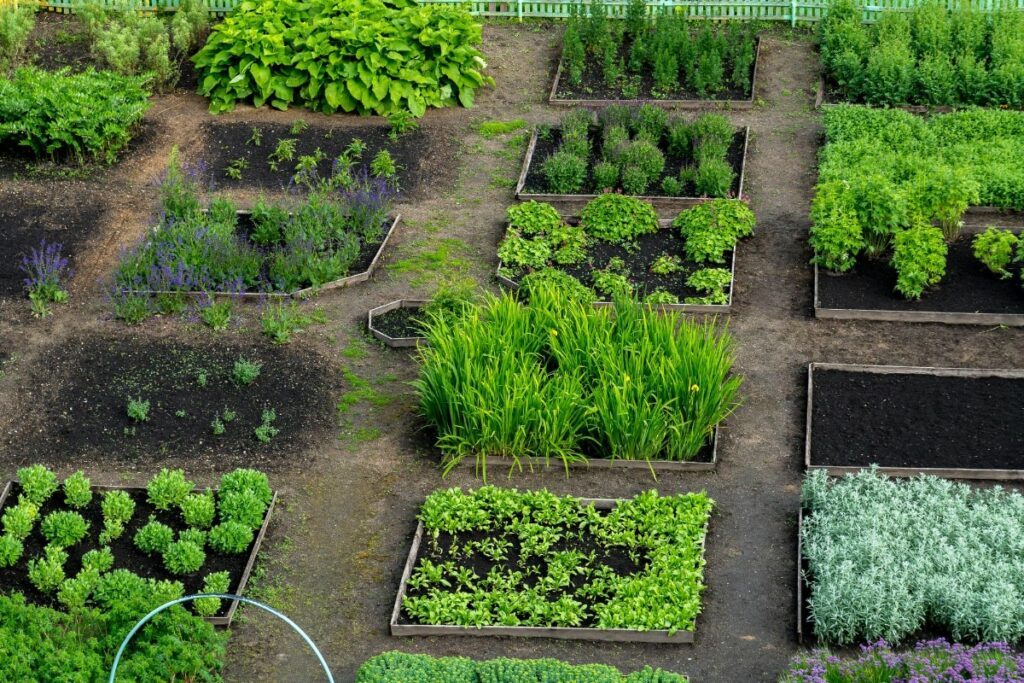
Square foot gardening was developed in the 1970s by Mel Bartholomew. Square foot gardening claims to be more productive, uses less soil and water, and needs less maintenance than a traditional vegetable garden.
To employ the square foot gardening method, create a raised bed between 6 and 12 inches deep and 4 feet by 4 feet wide. A square foot lattice is placed on top to separate the crops. The beds are filled with an equal mix of compost, peat moss, and vermiculite.
This method uses the no-dig approach and doesn’t compact the soil by walking on it. The square feet the lattice has marked out are then filled with either 1, 4, 9, or 16 plants, depending on the size.
Climbers, like peas, are planted in mini-rows of 4 per square. So as not to disturb the roots, plants are thinned out by snipping them with scissors, rather than pulling them out of the soil.
The main disadvantage of this method is that larger crops, such as squash, potatoes, melons, and fruit trees, cannot be accommodated by the square-foot garden.
Also, the soil mix causes issues for many conscientious gardeners, as peat moss and vermiculite come from non-renewable sources. Peat moss is a valuable natural sink for greenhouse gases, and vermiculite mining has a large carbon footprint.
Also, while the square foot garden method is great for small spaces, it can get costly if you have a large area that you want to use for vegetable gardening.
3. Four Square Layout
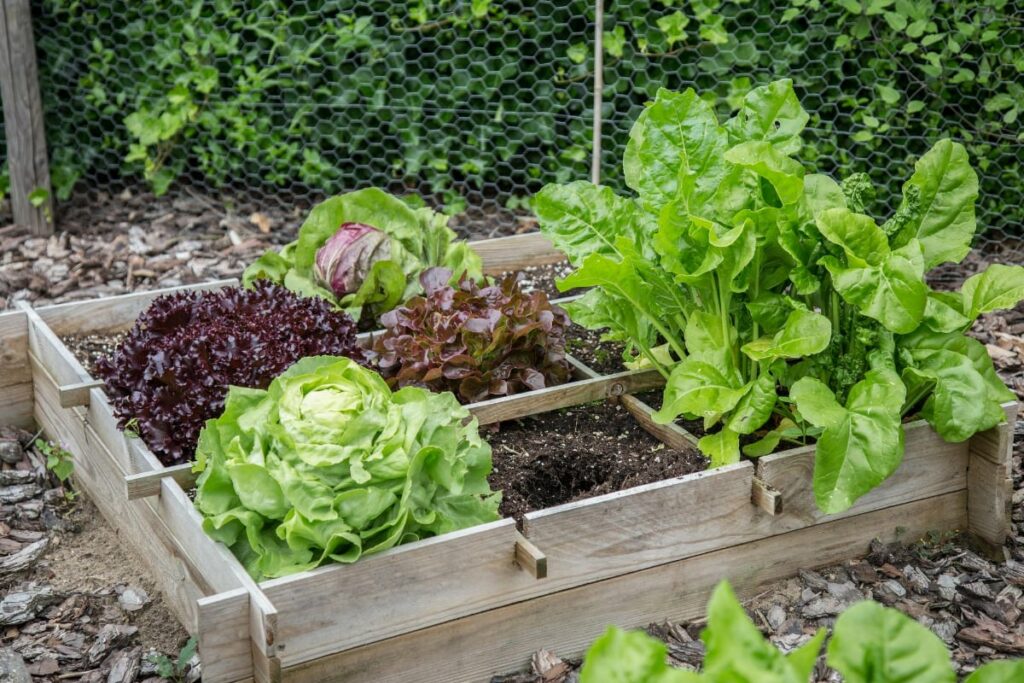
The four-square layout is a classic kitchen garden design. The area is divided into four sections, with two intersecting paths between the sections. One path traditionally leads from the front gate to the kitchen door, and the garden is usually walled or surrounded by dense hedges.
Each of the four sections can be used for whatever vegetables you want. You could use separate ones for fruit, herbs, and vegetables, or this design lends itself to a four-year crop rotation system.
Herbs can make great edging plants for this design, and you can introduce creeping thyme or Corsican mint that will grow into the path and release fragrance when stepped on.
The path itself can be made from whatever you want. Pathing bricks, mulch, or even grass can be used. Depending on the size, the area at the intersection of the two paths can have a feature like a tree, water feature, or sculpture.
The plants and gardening methods you use for the four sections are entirely up to you, making this design popular for many gardeners.
4. Block Layout
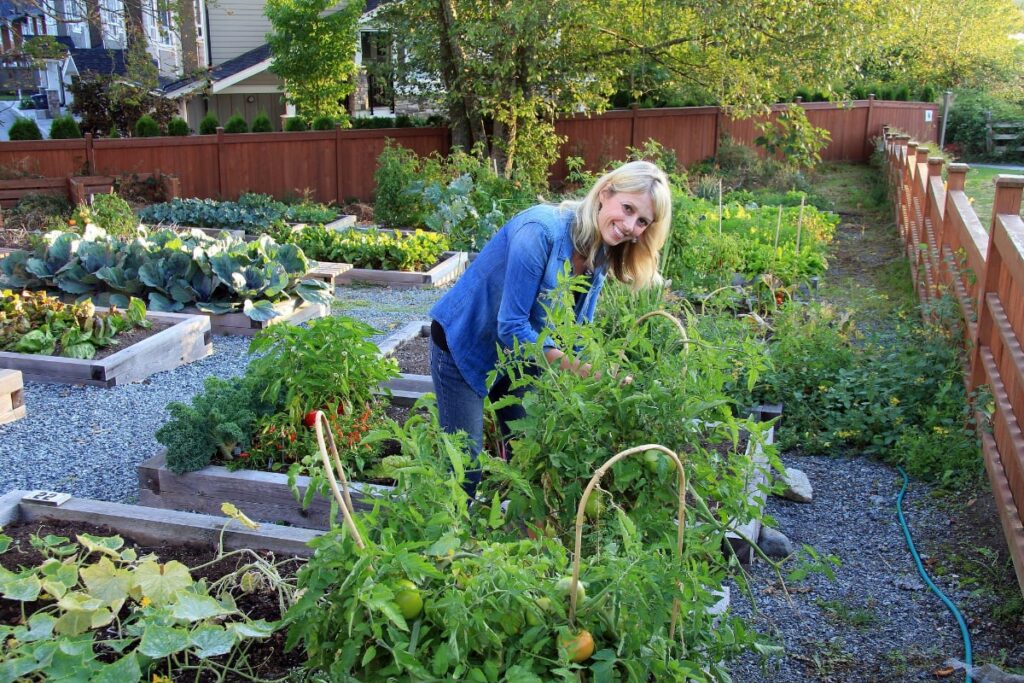
The block layout method is similar to planting in rows; instead, you group vegetables in blocks. Usually, the blocks are edged to create a raised bed, meaning that the paths between the blocks are permanent. The permanent paths can be mulched with long-lasting mulch like wood chippings.
Blocks are usually 3-4 feet wide so that you can reach the middle to weed and harvest. Plants are packed in to make the most of the space. This method can be good in lots of different spaces, and the number of blocks can be tailored to your yard.
No-dig is the best approach to the block layout, as you can add a layer of compost on the top each year, replenishing the soil. This layout also works well with a crop rotation system.
The disadvantage of this method is that watering the roots and weeding can be an issue due to the densely packed nature of the planting. It can also be hard to identify any problems with pests or diseases.
5. Vertical Layout
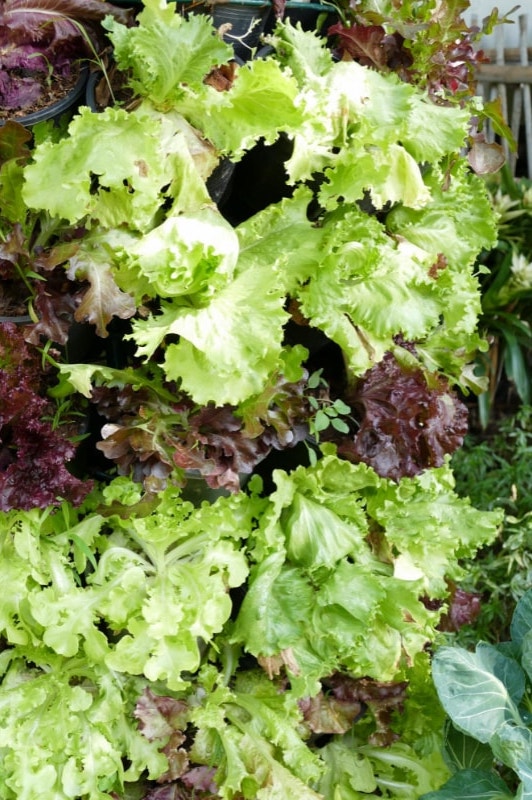
The vertical layout is perfect for yards where space is a premium. With this layout, it is possible to have a productive vegetable plot and still have space to sit or for kids to play, all within a relatively small space.
Vertical gardens make the most of the space by growing up rather than spreading out. Vegetables like salad veg, herbs, and climbers do well in a vertical layout. Use trellis and poles to grow climbers up and as support for tomatoes. You can attach pots to a fence or make a pallet planter.
Salad towers are also a great addition to a vertical garden. Build a cylinder from wire mesh and line it with a plastic sheet or garden membrane. Then fill the cylinder with compost and cut slits in the lining material where you want to plant your salad leaves.
Lettuce, spinach, and chard are some of the many salad plants you can add to your tower. You can add strawberries or plant climbers around the tower to get even more out of it.
6. Keyhole Bed Layout
A keyhole garden pairs a raised bed with a composter, so your plants can get nutrients from composted matter without disturbing the soil and without the need for digging.
This method is great for people with smaller spaces as you don’t have to leave an area for a compost heap and is a good solution for people with lower mobility who want to compost and keep a vegetable patch.
The garden bed is round with a pie-slice section cut out to allow access to the compost basket in the center. The bed can be any height you want but tends to be taller than most raised beds.
In the center of the bed, a cylinder of chicken wire or wire mesh is created for compostable material. Once the bed is complete, it can be filled with rocks or organic matter with a layer of earth and compost at the top for planting, leaving the wire cage empty.
The wire cylinder is then filled with compostable materials, and vegetables are planted in the rest of the bed. By watering into the cylinder, nutrients are dispersed, and water can get right to the roots of the plants.
Once the basket is full, you can remove the compost to use in other garden areas. Remember to leave a removable panel at the bottom of the compost basket for easy removal of compost.
7. Raised Bed Container
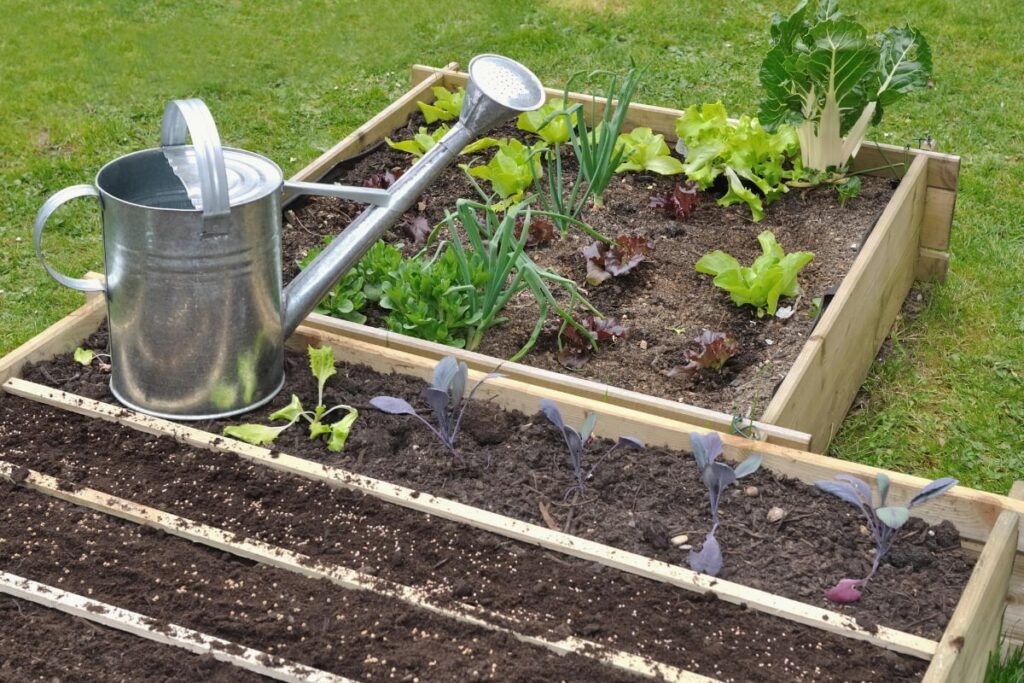
Raised bed container gardens are a great combination of raised beds and pots. They are usually on legs and higher than traditional raised beds, making them good for people who have back problems or don’t fancy bending down to do the planting and weeding.
Raised bed containers and pots can be great if you are rearranging your garden every once in a while for sun exposure. You will only have to move the containers to change the layout of your garden. This method is also great if you don’t have suitable soil or a pathed yard.
The only real disadvantage of raised containers is that they will need much more watering. As they are off the ground, they can dry out quickly.
How to Layout a Vegetable Garden Final Thoughts
All in all, there are lots of ways to layout and design a vegetable garden. Each has its advantages and disadvantages. It’s important to find what works best for you, your yard, and your lifestyle.
Learn more about vegetable gardening:

